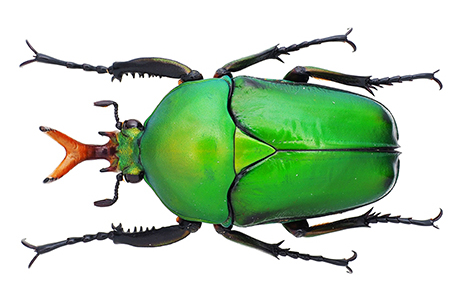Beetles

GROUND BEETLES (coleoptera / carabidae)
Description:
Ground beetles, also known as “Carabids”, range from 1/16 to 1 3/8 inches long and appear flattened and elongated. They have thread-like antennae and hard wing covers that meet in a straight line down the center of the back. The win covers have numerous parallel ridges running lengthwise. Ground beetles make up one of the largest groups of beetles in North America with approximately 2,500 different species all with some variation in their body shape and coloring. Most are shiny and black with some varieties appearing iridescent and extremely colorful.
Biology:
Adults are active at night and tend to hide under rocks and moist debris during the day. They are adept predators and feed on insects and their larvae like caterpillars, root maggots, snails, and other soft-bodied insects.
Did You Know?
Ground beetles have four life stages: egg, larva, pupa, and adult. It can take up to ayear for them to reach adulthood, and adults can live for two years or more.
Impact:
Ground beetles are important components of soil food webs, helping to break down organic matter and maintain soil health and fertility. Sometimes ground beetles will get inside homes, but they are not harmful and can only reproduce outdoors. If you see one you can simply move it outside. Most ground beetles do not bite but some species can pinch with their large mandibles, which is not very painful. However, if large numbers of beetles are present they can become more annoying than beneficial.
Solutions:
Beetles may enter structures by crawling through small openings or under doors. They prefer outdoors and if left inside will quickly die. Ground beetles are good for the environment, so harsh pest control methods should not typically be used. If large numbers of beetles are getting inside, the addition of door sweeps, and removal of leaves, mulch, and debris around the perimeter of the building may be recommended. Spot treating may be necessary to control extremely high populations from becoming a nuisance.
